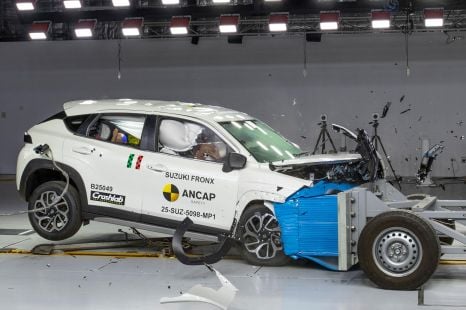

Damion Smy
Suzuki Fronx scores one-star ANCAP rating after seatbelt failure
8 Hours Ago
Volkswagen's passenger car flagship remains an underappreciated gem, especially as a Shooting Brake. It's pretty, plush and practical.
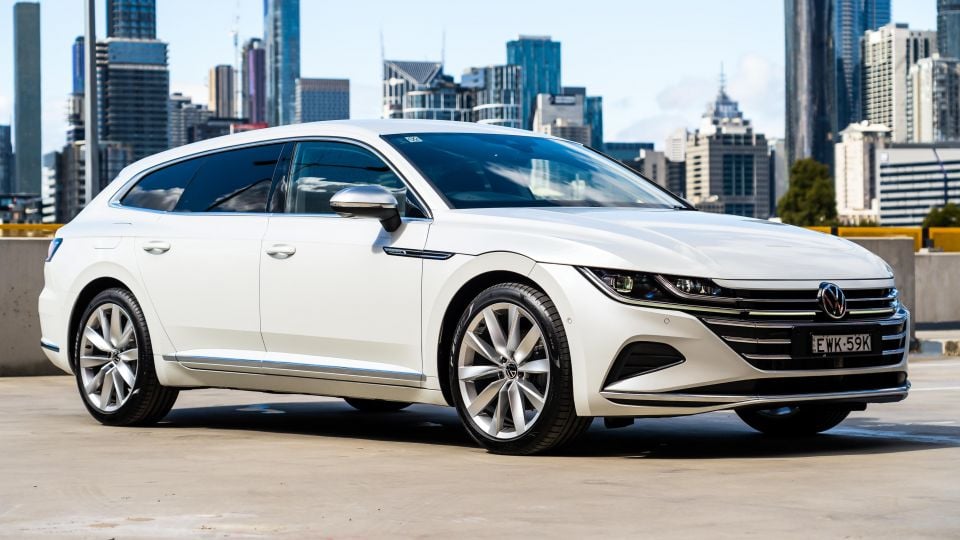
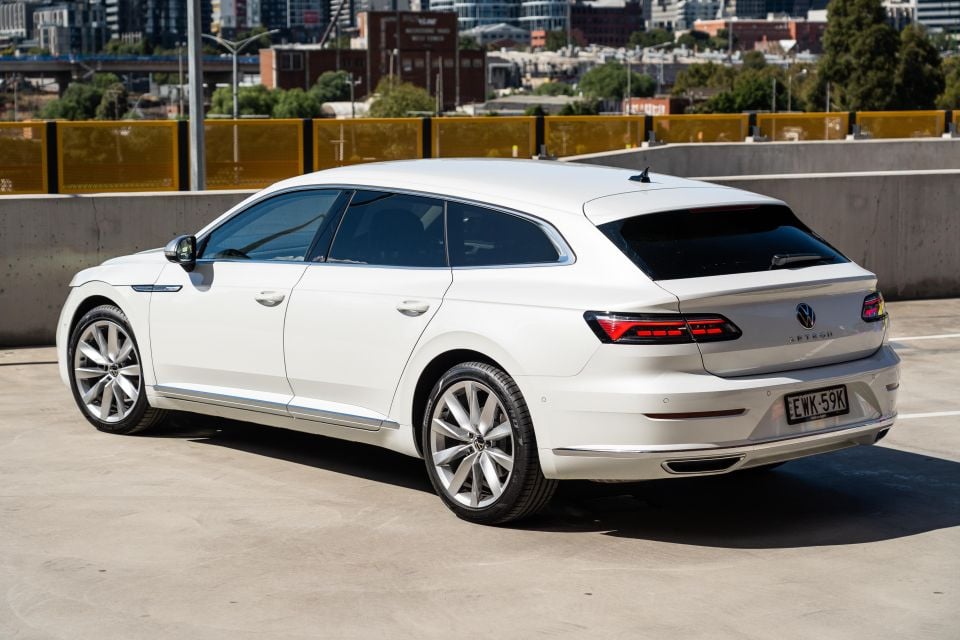

Quickly see how this car stacks up against its competition. Select any benchmark to see more details.
Where expert car reviews meet expert car buying – CarExpert gives you trusted advice, personalised service and real savings on your next new car.
Mirror mirror on the wall… which is the fairest Volkswagen of them all?

The Volkswagen Arteon is the brand’s most desirable design; with slinky coupe-like proportions, and the option of a four-door coupe-looking Liftback or this even cooler Shooting Brake.
Just look at it. There are few vehicles on sale right now that look anything like this, if anywhere near as good.
The Arteon is on death row, however. Slow sales globally mean it won’t be renewed for another generation, with its place atop the Volkswagen passenger car line-up to be taken over by the all-electric ID.7 – which at this stage isn’t coming to Australia, at least for some time.
Conceived as a successor to the Passat CC, eventually known as just the CC, the Arteon served as an answer to the Audi A5 Sportback and BMW 4 Series Gran Coupe, offering a luxe four-door coupe aesthetic for substantially less money.
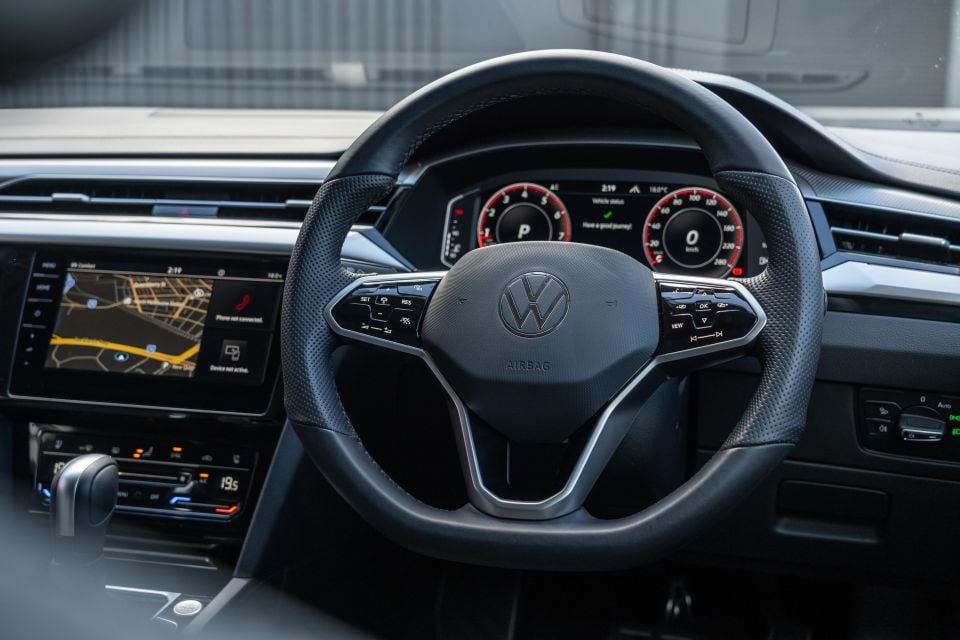
Pricing starts at $63,990 before on-road costs for the 140TSI Elegance, with the Shooting Brake commanding a $2000 premium. For reference, the most affordable A5 Sportback is priced from $85,800 and the entry-level 420i Gran Coupe starts from $77,900.
What the Arteon lacks in badge cachet, it makes up for with outright space, and familiarity thanks to its MQB underpinnings and Passat-based interior.
Is this a must-have luxury car bargain?
As noted earlier, the 140TSI Elegance is priced from $63,990 for the Liftback, and $65,990 for the Shooting Brake – all prices exclude on-road costs.
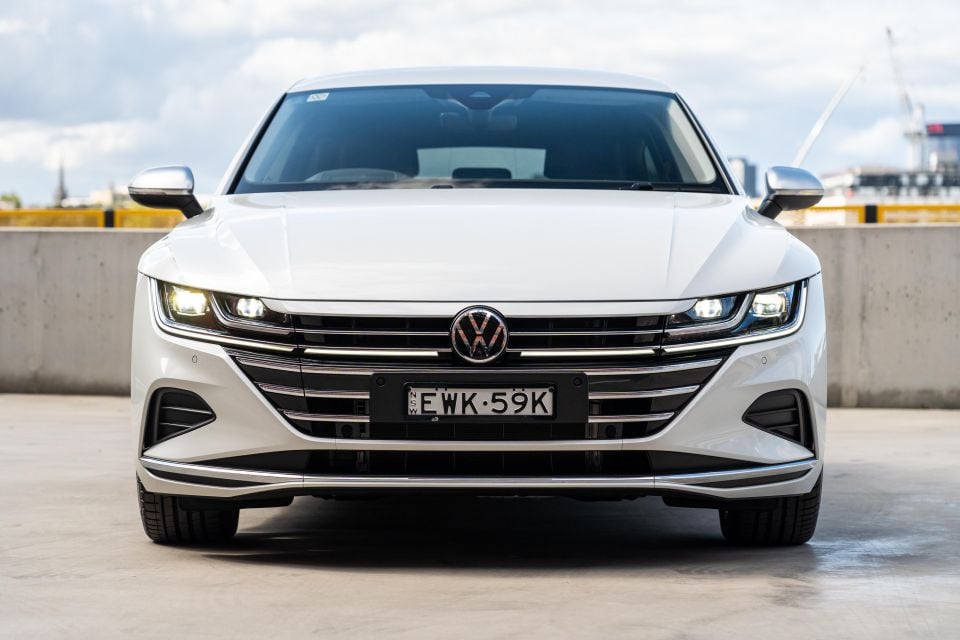
If you want more performance and traction, Volkswagen will sell you the 206TSI R-Line in both Liftback and Shooting Brake bodies for $71,590-$73,590, complete with a 206kW/400Nm 2.0 TSI petrol engine and 4Motion all-wheel drive.
Australia only gets 2.0-litre turbo petrol options, despite turbo-diesel and plug-in hybrid options being available overseas. There’s also a 235kW Arteon R abroad that sadly isn’t offered in Australia, despite being made in RHD.
Despite dwindling sales in the larger passenger segments, the Arteon has a few rivals. The Audi A5 Sportback (from $78,500) and BMW 4 Series Gran Coupe (from $77,900) are the most obvious, and you can consider the Genesis G70 (from $63,00) which offers a Shooting Brake wagon option (from $78,191).
More niche alternatives include the Skoda Superb (from $56,990 D/A) and Peugeot 508, with the latter being the most conceptually similar vehicle in offering more rakishly-styled Fastback and Sportswagon bodies. At the time of writing the 508 GT is being offered from $65,990 D/A for the Fastback and $67,990 D/A for the SW.
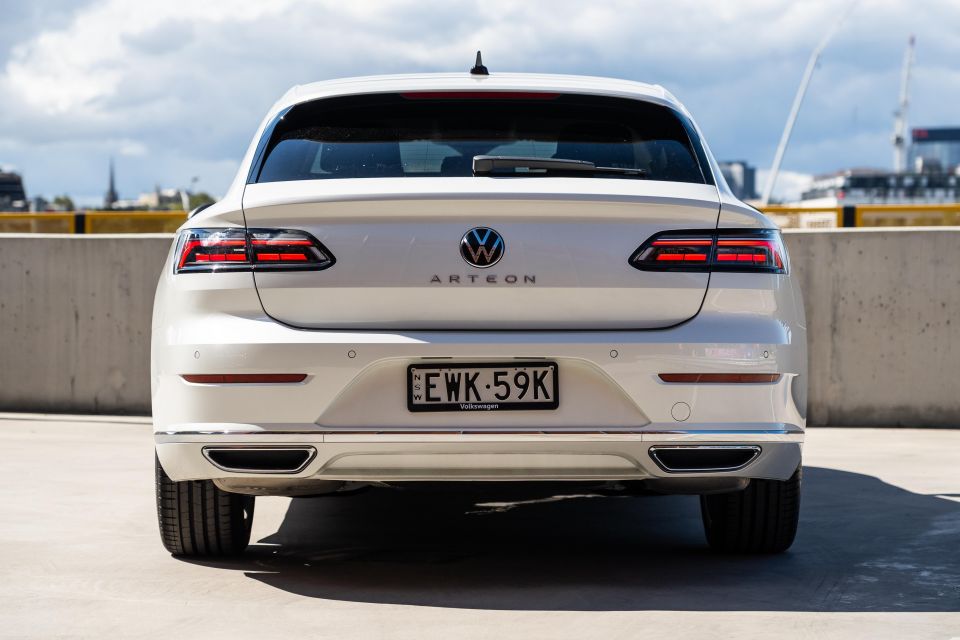
2023 Volkswagen Arteon pricing:
Prices exclude on-road costs
Buy your new car without the stress. It's fast, simple and completely free.

Great service from Travis and team, second time I have used this business would not hesitate to recommend them to anyone
Craig C.
Purchased a Ford Ranger in Sunshine Coast, QLD
CarExpert helped Craig save thousands on his Ford Ranger, now let us save you on your next new car.
Find a dealIf you’ve ever sat in a Passat or Tiguan, you’ve probably seen it all before.

The genetic links to those two vehicles are apparent in the Arteon’s cabin, particularly the former. Ahead of the B-pillars, the overall look and feel of the dash and displays are largely the same.
Front occupants are treated to comfortable, supportive seats with full electric adjustment, memory presets, as well as heating and ventilation. The driver also picks up a swish massaging function.
It’s otherwise pretty standard Volkswagen fare, with a familiar layout and a good mix of materials. Build quality feels solid, too.
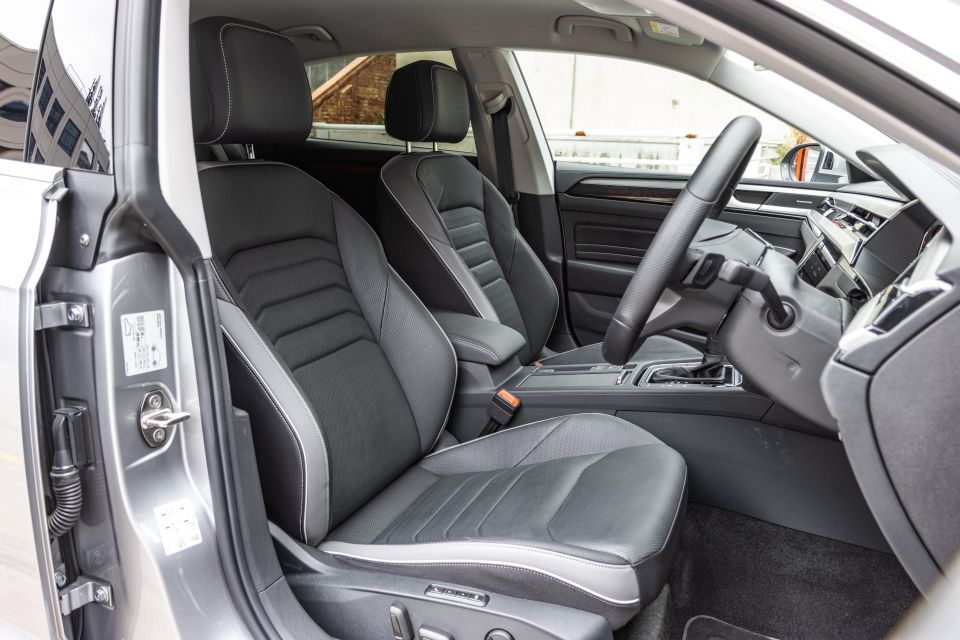
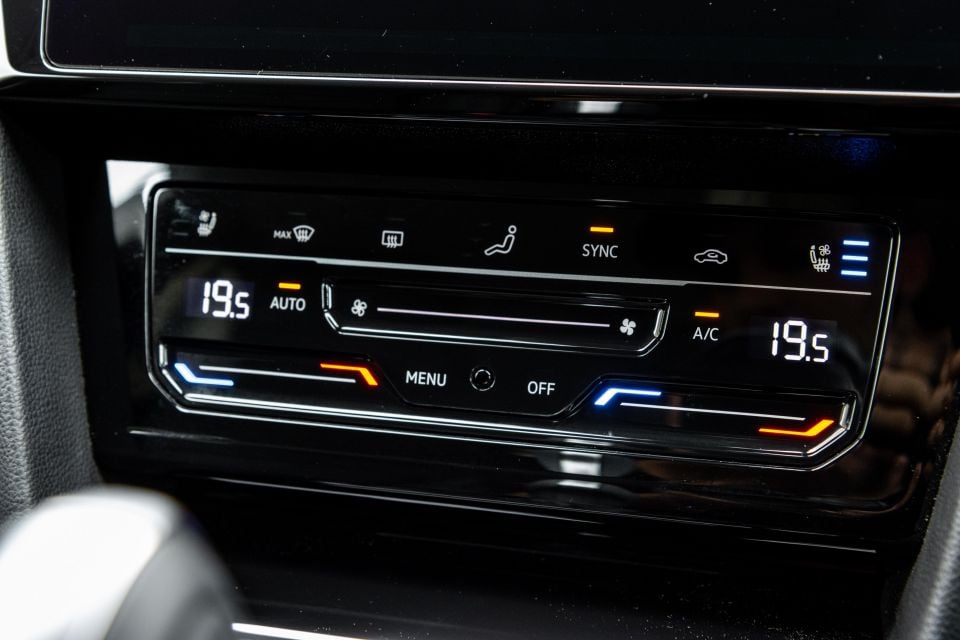
One sore point – and this won’t be for everyone – is the proliferation of touch-capacitive controls for the steering wheel and climate controls.
In fairness, the HVAC controls are one of the better Volkswagen implementations, as they work like regular buttons while also offering a touch slider function. The steering wheel, however, is fiddly.
You’ll often find yourself mis-pressing or swiping when you’re trying to engage Travel Assist or adjust the volume, for example. Accidentally pressing one of the outer buttons while holding the steering wheel at 9 and 3 o’clock is also not an irregular occurrence when turning, which is just annoying.
Otherwise the touch points are well finished, with smooth leather and polished metal-like accents which all look and feel quite high-end.
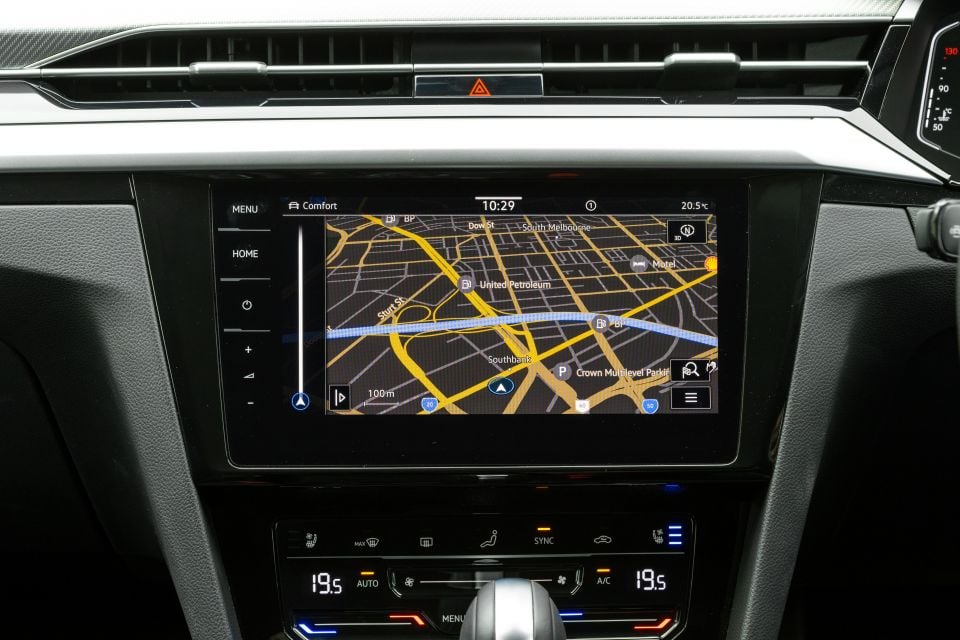
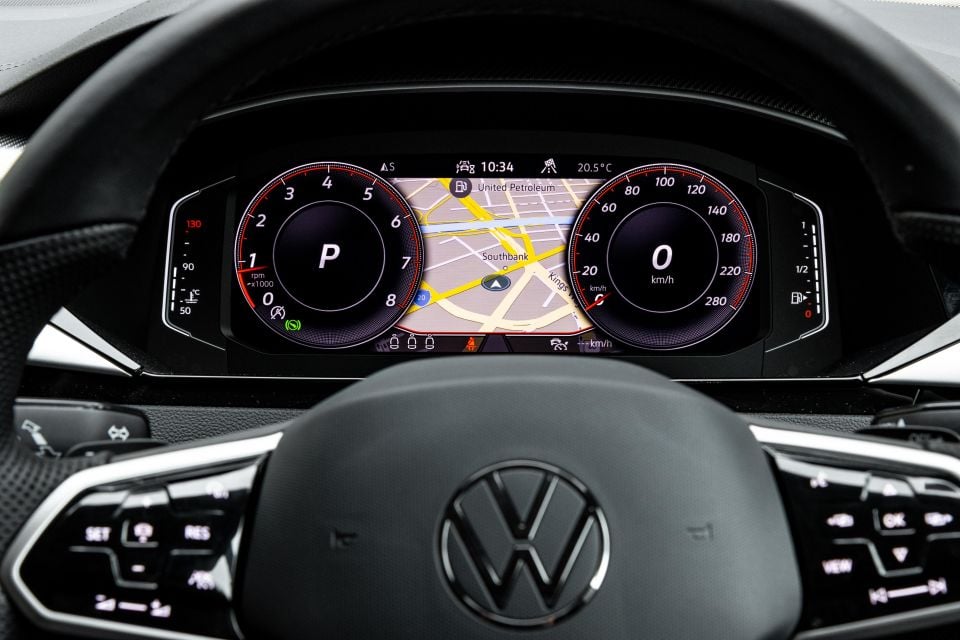
The Arteon’s digital displays are likewise familiar from elsewhere in the line-up. A 10.25-inch digital instrument cluster sits ahead of the driver, while a 9.2-inch touchscreen is integrated into the dashboard.
Both are powered by Volkswagen’s latest software interface, meaning the latest mapping, skins and processors are all here. They’re both fairly high resolution and user friendly, though their sizing is a bit behind the luxury marques.
Wireless Apple CarPlay and Android Auto are handy, and the former worked well during our time with the Arteon – if with the odd dropout in certain parts of Melbourne, which is common.
There’s also native navigation as well as DAB radio, though the Arteon like the wider Volkswagen range lacks net-based services or online traffic information, something that’s pretty much a given in the premium segments and increasingly common amongst mainstream brands.
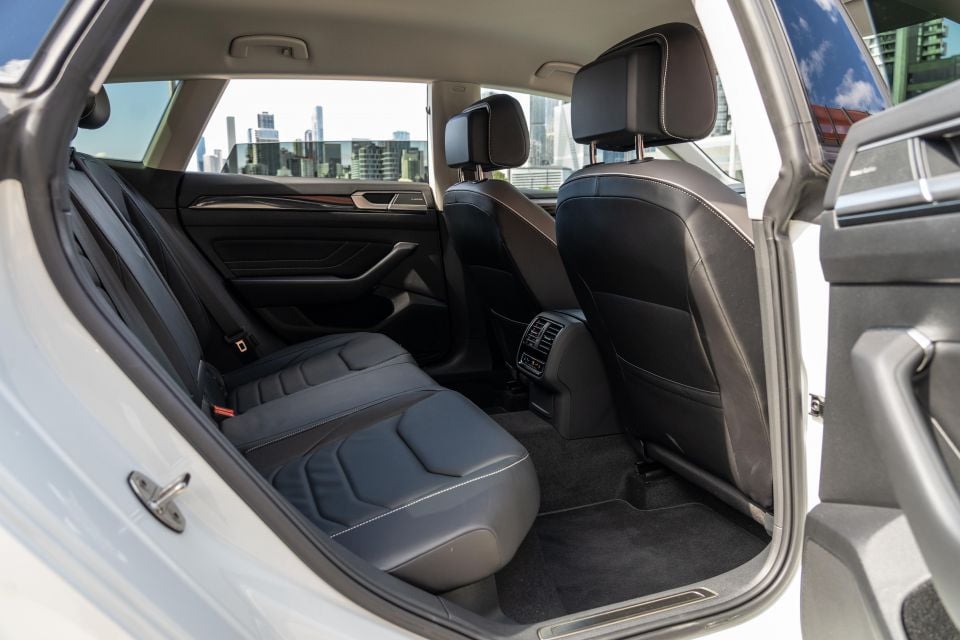
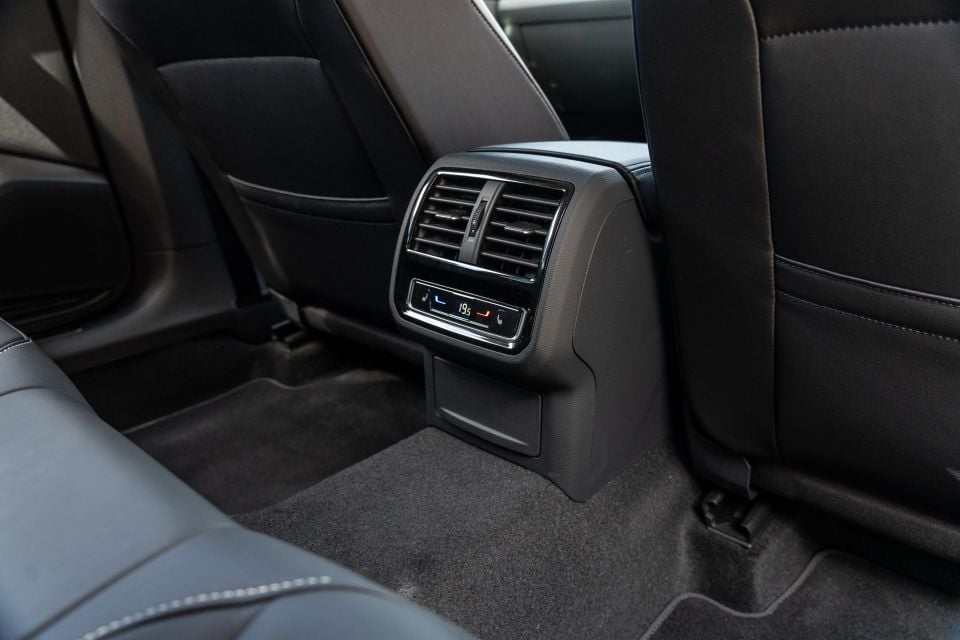
A key difference in the second row between the Arteon and its platform mates is just how much room there is; this is much closer to a Skoda Superb than a Passat courtesy of its extended wheelbase.
Leg and knee room are capacious, and more than what’s on offer from its coupe-styled and sedan-bodied rivals. It brings back memories of the old Holden Statesman.
Headroom isn’t quite as impressive on the count of the sloping roofline, but there’s still enough for me at 6’1 which can’t necessarily be said for luxury competitors with similar proportions.
The centre seat is skinny and there’s a large driveline hump, but the footwells are so large that three across can be done for shorter trips. A third zone of climate control with vents, map pockets, bottle holders in the doors, and a fold-down centre armrest with cupholders add to the list of creature comforts.
Kiddies are also catered for with ISOFIX anchors for the outboard seats and top-tethers across all three. The Shooting Brake in particular makes for a sexier take on the old station wagon formula.
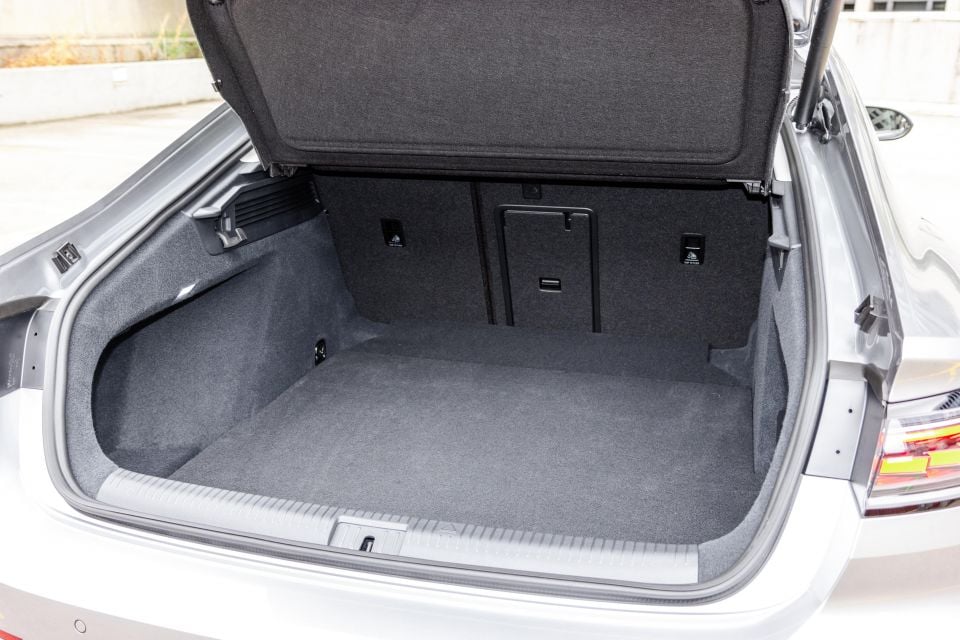

While the two body styles in theory should make for discrepancies in load capacity, the Shooting Brake version doesn’t add all that much practicality on paper.
The Arteon Liftback quotes 563L-1557L (5 seat-2 seat) in both Elegance and R-Line variations, with the Shooting Brake marginally better at 565L-1632L.
Part of that is down to the shared floor length of the boot area, which is 1181mm with the rear seats upright and 2092mm with them folded. Under the boot floor is a full-size alloy spare wheel – rare these days.
All versions of the Arteon in Australia are powered by Volkswagen’s ubiquitous EA888 2.0 TSI petrol engine.
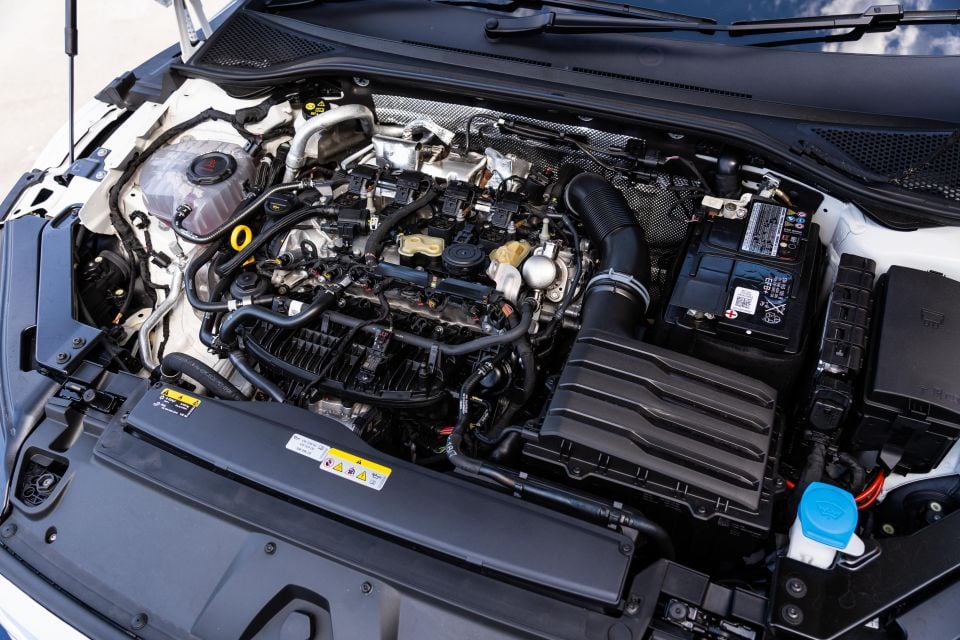
The 2.0-litre turbocharged four-cylinder motor develops 140kW (4200-6000rpm) and 320Nm (1500-4100rpm) in the aptly named 140TSI, with drive sent to the front wheels via a seven-speed DSG dual-clutch automatic. VW claims 0-100km/h takes 7.9 seconds (8.0s Shooting Brake).
In the 206TSI, the same engine develops a meatier 206kW and 400Nm, essentially running the same tune as the Mk7 Golf R. The extra grunt and 4Motion all-wheel drive help cut down the benchmark sprint to 5.5-5.6 seconds.
Fuel use for the 140TSI is rated at 5.8L per 100km on the combined cycle for the Liftback (6.0L/100km Shooting Brake), with CO2 emissions quoted at 144g/km. The fuel tank holds 66 litres regardless of variant or body style.
Our real-world testing in mixed conditions yielded closer to 8-9L/100km according to the Arteon’s trip computer, but that’s with plenty of heavy stop-start traffic thrown in.
Volkswagen’s MQB-based products are consistent when it comes to on-road characteristics – and the Arteon is no different in both Liftback and Shooting Brake guises.
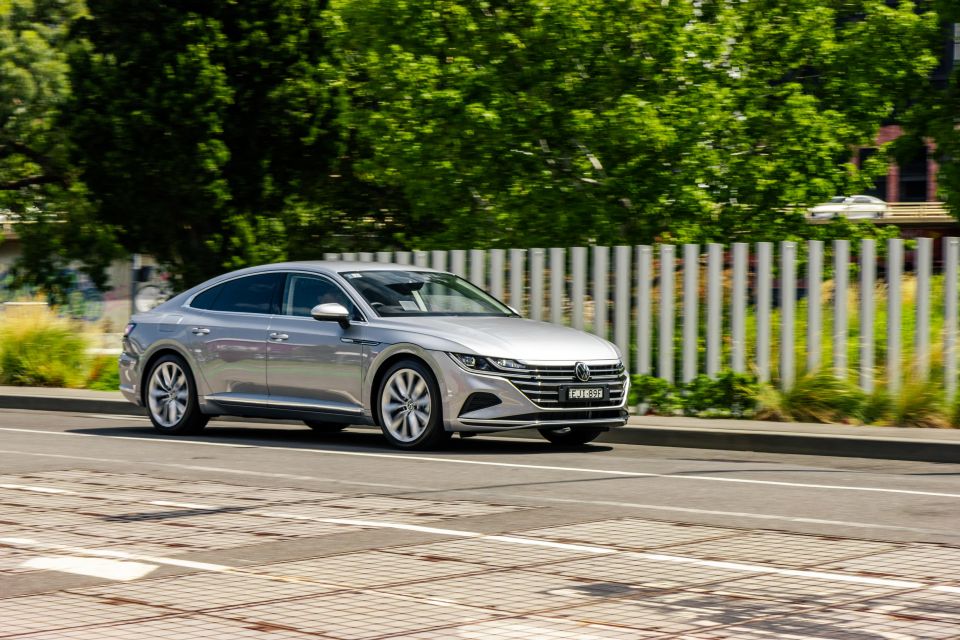
That’s not to say it feels cheap to drive, if anything it’s quite the opposite.
In 140TSI guise, the Arteon has a more relaxed and luxurious character. Popping the Adaptive Chassis Control into Comfort and driving in a more sedate manner really shows off the car’s strengths.
With its long wheelbase and wide, low-slung stance, the Arteon is a smooth operator that beautifully irons out the various lumps and bumps of urban and city streets, but is just at home on the highway.
That’s all while wearing relatively large 19-inch alloy wheels, shod in 245/40 tyres.
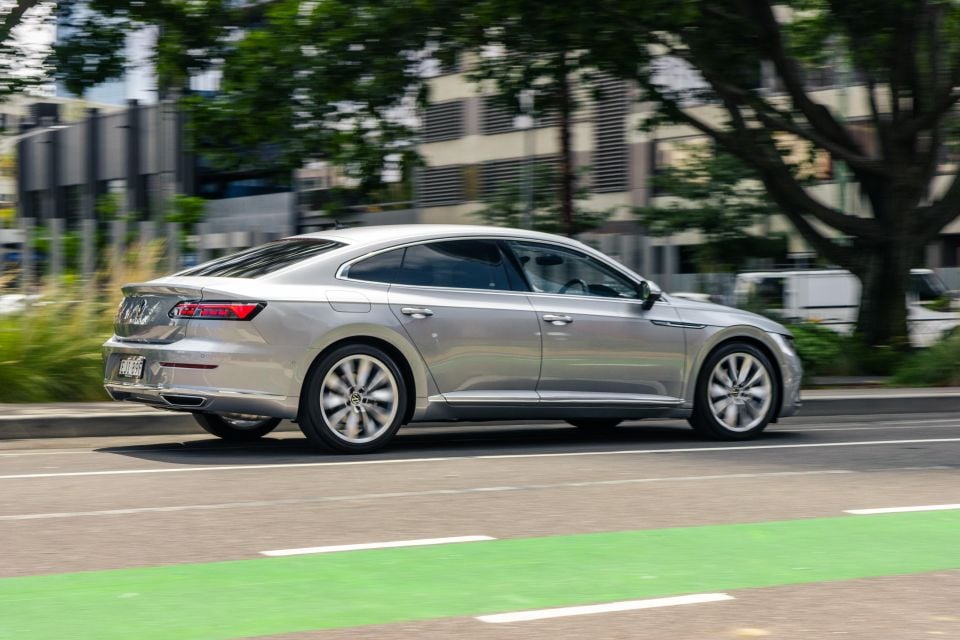
It kind of drives like a super-long Golf, or a slightly longer Passat… Which means there’s an innate tautness to the chassis and fluidity to the driver controls that balance comfort and engagement nicely.
While not as sharp as a BMW 4 Series, the Arteon dials in enough directness to communicate a good deal of what’s going on underneath you, while isolating you nicely from the outside world.
Even in this lower state of tune, the 140kW 2.0 TSI has enough get up and go, with plenty of low-down torque and the raspy engine note this power unit is known for.
Volkswagen’s DSG dual-clutch auto is one of the best examples of the transmission, now developed to a point where it rarely exhibits the laggy, hesitant traits that are associated with this kind of shifter.
That said, the Arteon’s seven-speeder isn’t quite as quick to respond as the unit fitted to Volkswagen’s performance models, so unless you’re in Sport quick stabs of the throttle can be met with one, two downshifts before acceleration surges.
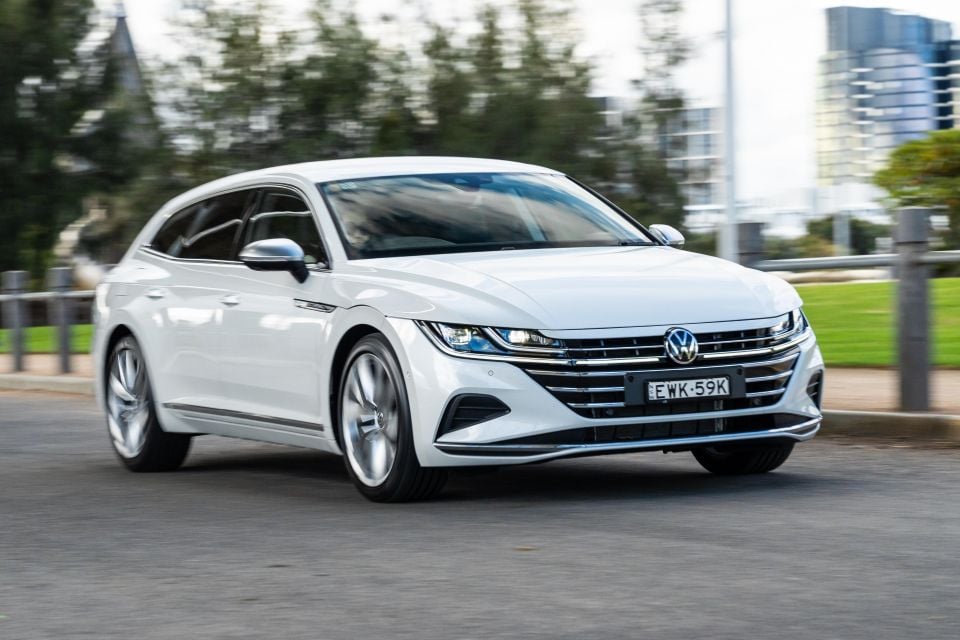
Where expert car reviews meet expert car buying – CarExpert gives you trusted advice, personalised service and real savings on your next new car.
Beyond city limits the Arteon is a fine cruiser, with a planted and secure feel at high speeds and a capable drivetrain that’s both punchy and refined.
The engine settles into a quiet hum in seventh, sitting at about 1800rpm at 100km/h, and the ride remains cushy without being wallowy or loose over high-speed undulations.
While wind noise is well suppressed, the Arteon lets in a little more road noise than you’d expect of something being pitched as a budget luxury car as well as the brand’s passenger car flagship. Over rougher surfaces you get some tyre roar echoing about, but it’s far from deafening.
In isolation it’s more than fine, but hop out of this into a base Touareg (which is admittedly dearer) and you’ll see what I’m talking about.

The Arteon comes equipped with all the driver assistance features and technologies you’d expect of a premium executive car, including the IQ.Drive suite of assists as well as trick IQ.Light Matrix LED headlights.
Travel Assist is one of the best semi-autonomous systems in the business, with intuitive, accurate inputs that don’t feel overzealous or like it’s trying to wrestle the wheel out of your hand. The adaptive cruise control also isn’t super conservative and is more human-like in its reactions than some rival systems on the market.
Matrix LED headlights are also something you don’t realise you need until you have them. Being able to illuminate around oncoming cars and other light sources with high-beams in poorly-lit areas is a godsend, and it’ll also pick up things like signage and hone in as well.
Given the very long and coupe-like proportions, blind-spot monitoring (Side Assist) and rear cross-traffic alert do come in handy, and because our test car was an MY22 example, these were fitted. However, from around September last year the Arteon has had to do without these features due to component shortages – more here.
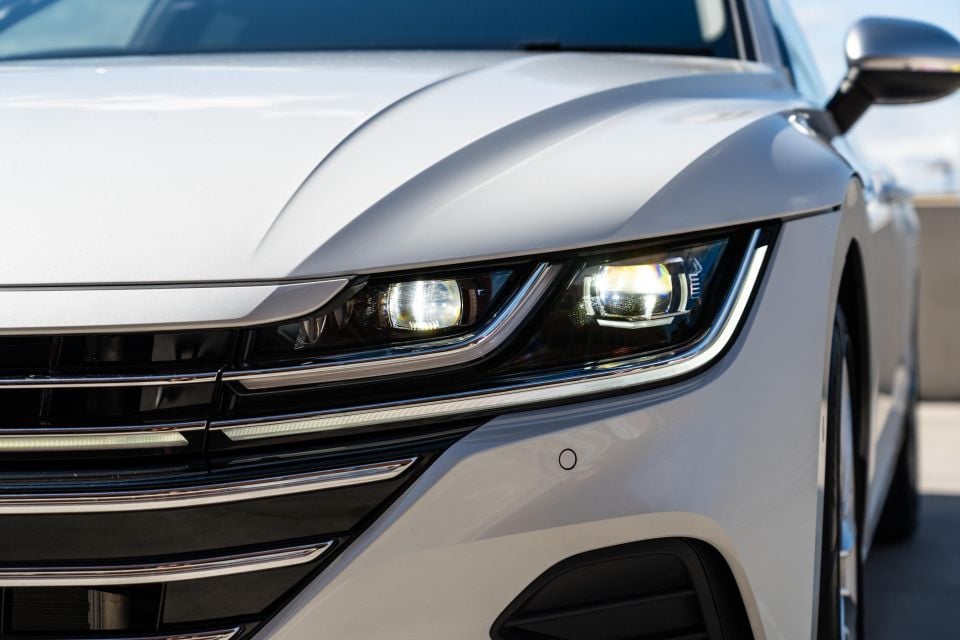
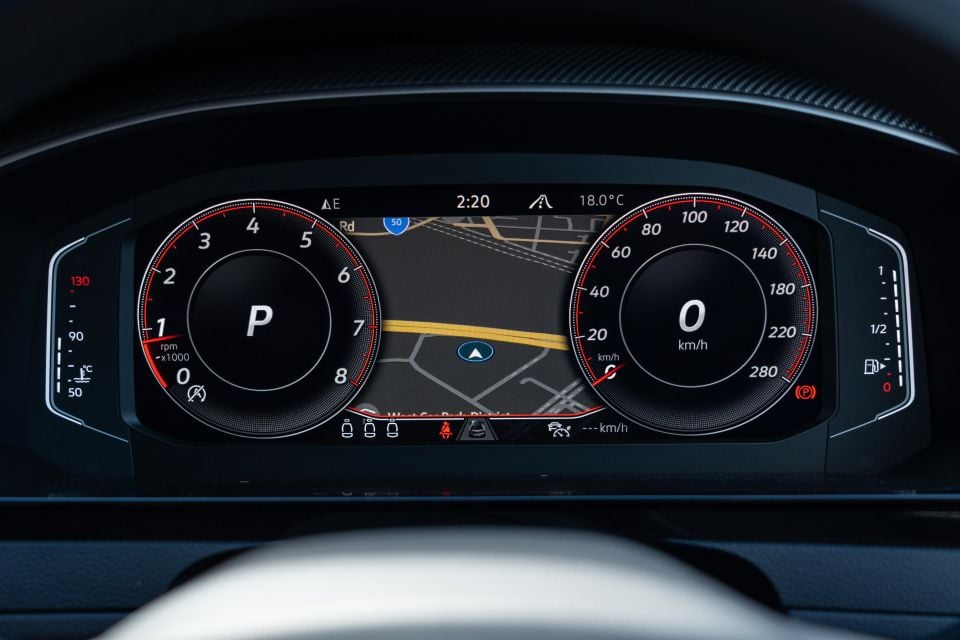

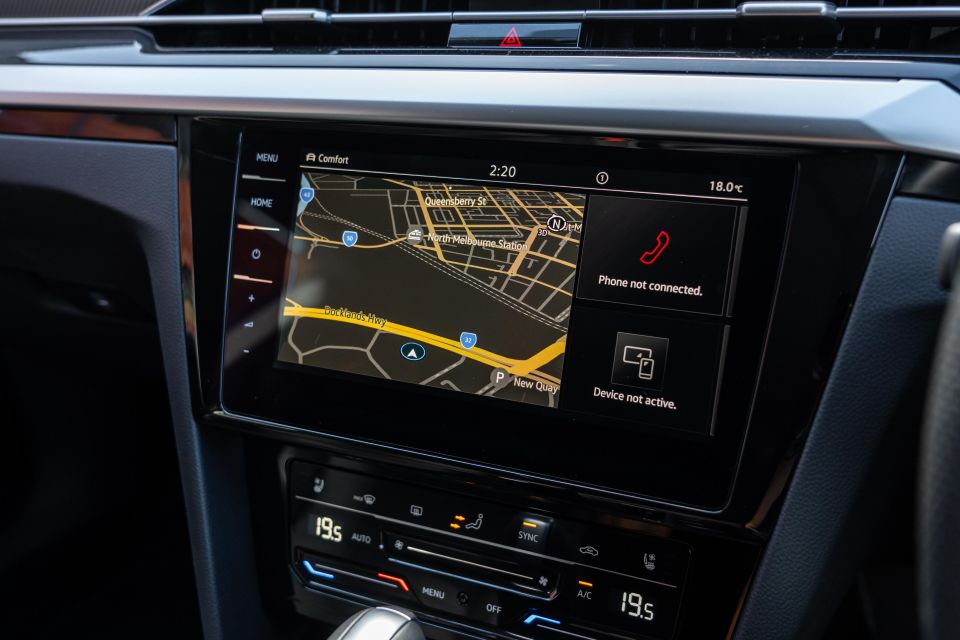
Arteon 140TSI Elegance highlights:
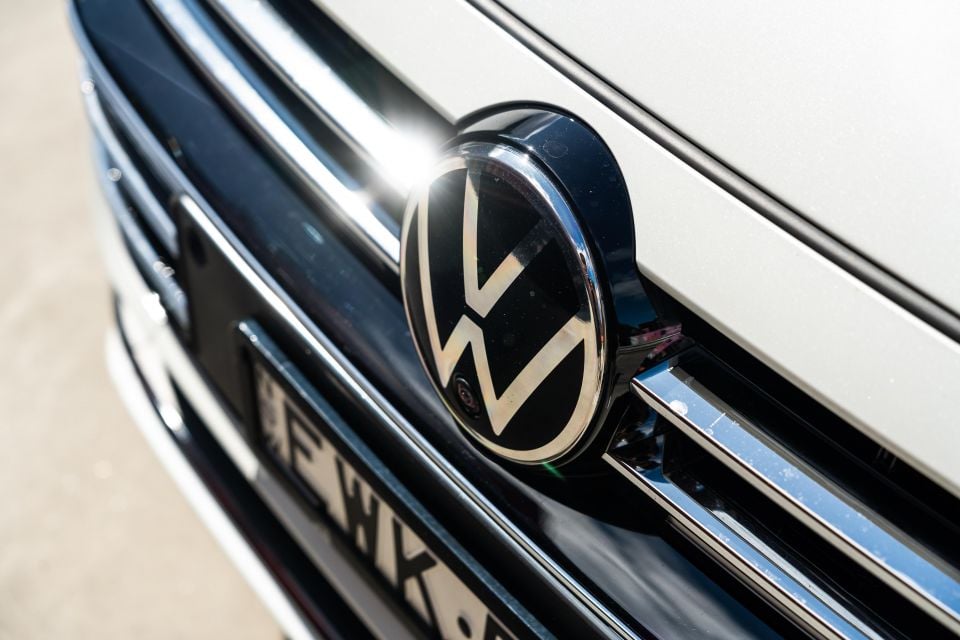
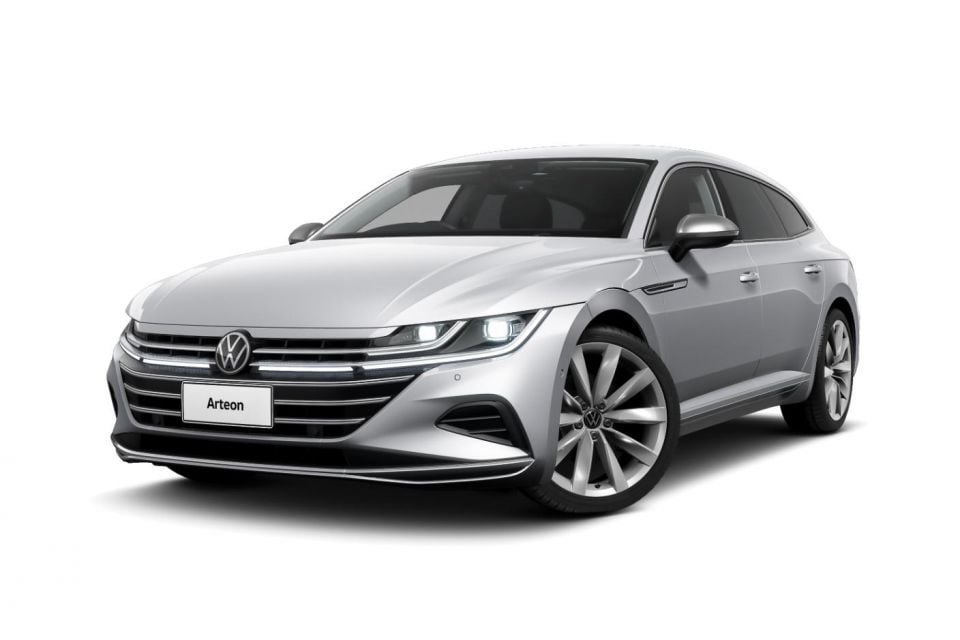
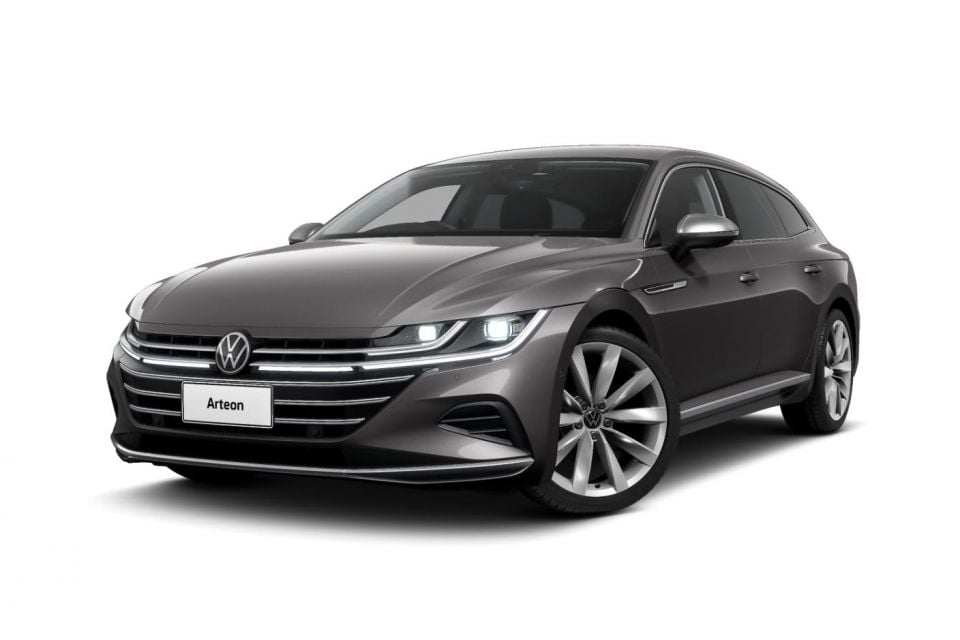
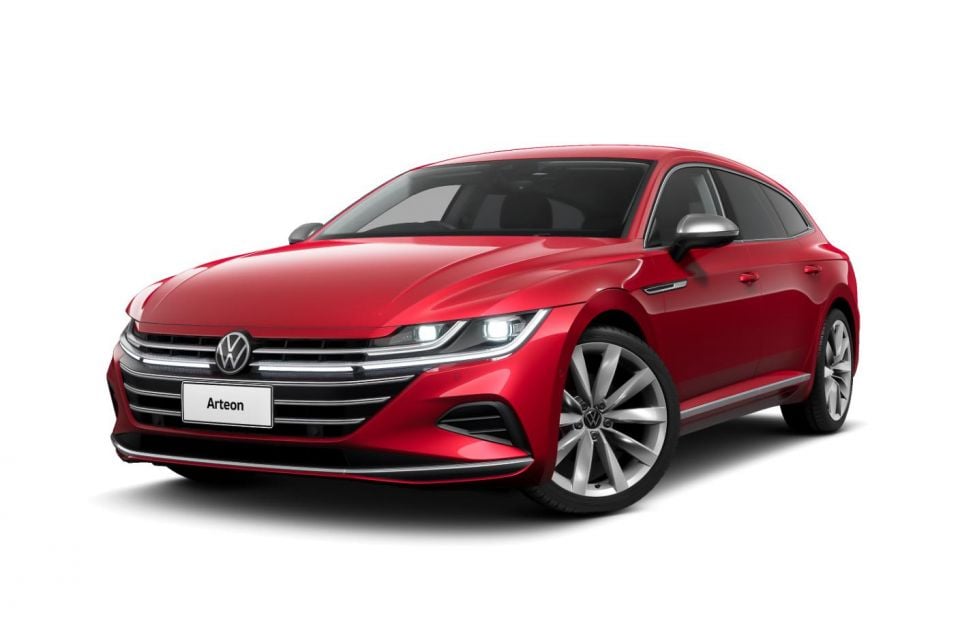
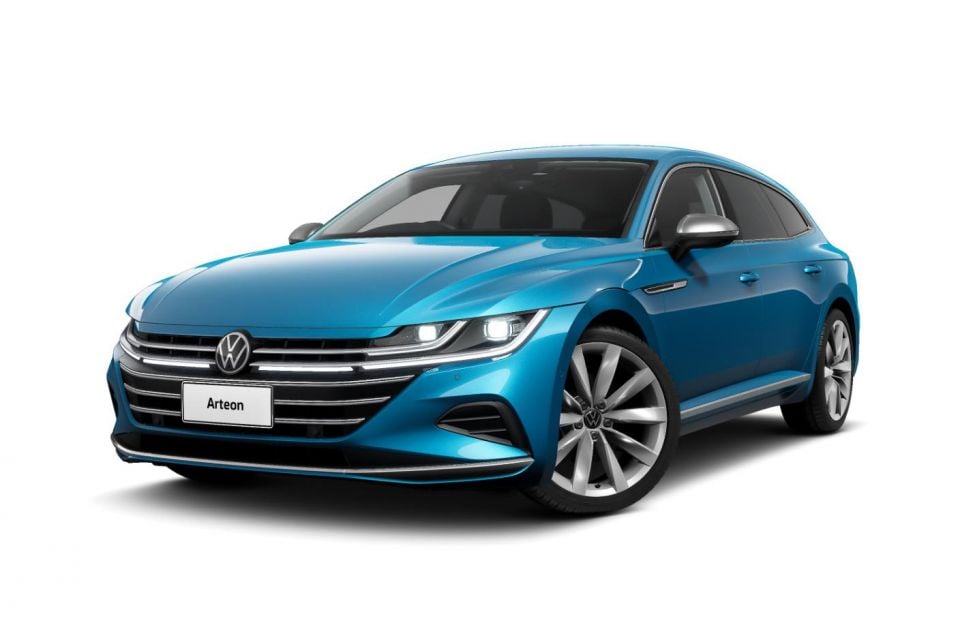
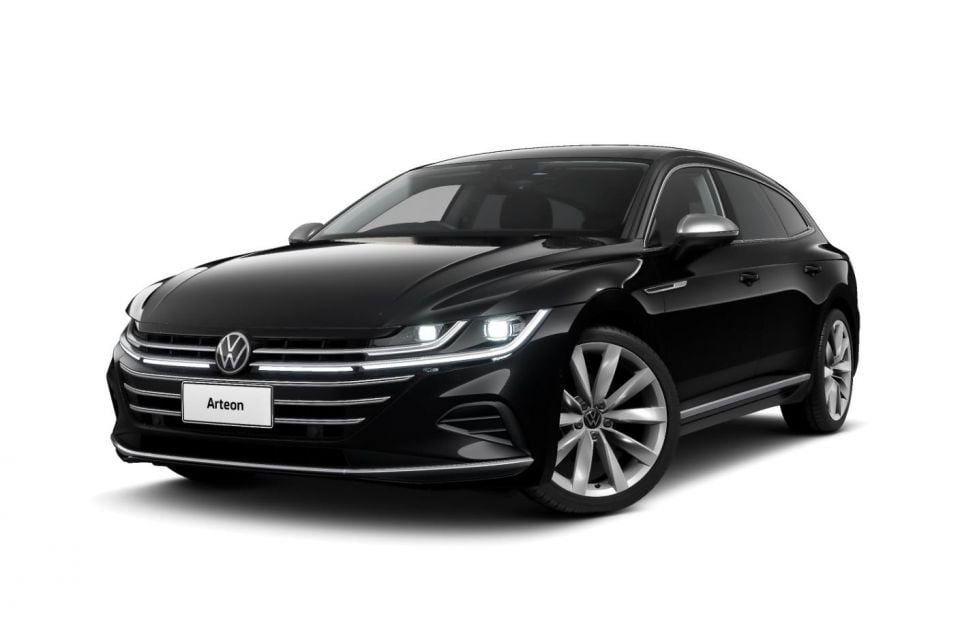
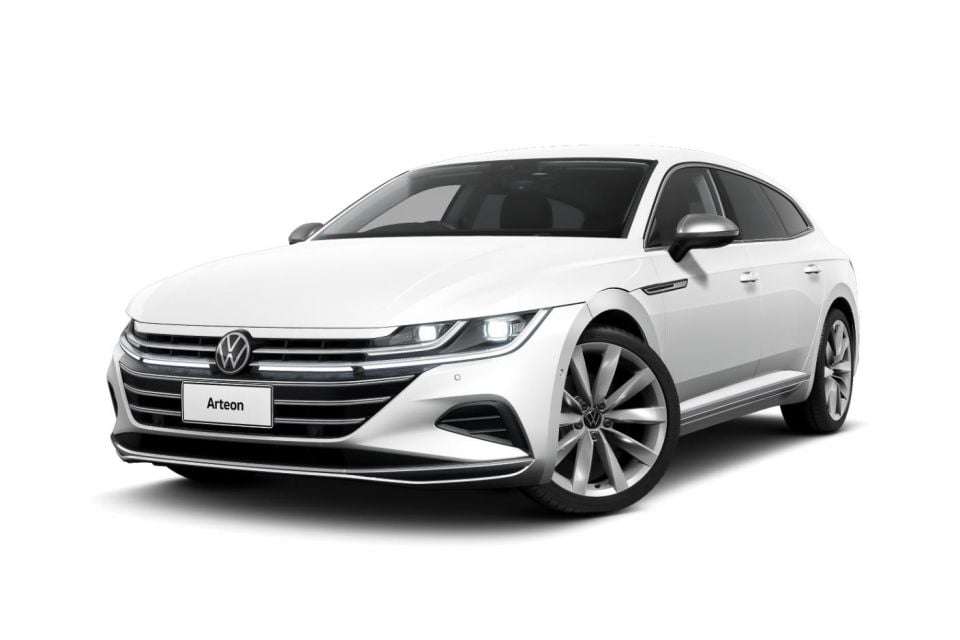
Standard
Premium: $900
The Arteon wears a five-star ANCAP safety rating based on 2017 Euro NCAP tests on the pre-facelift model.
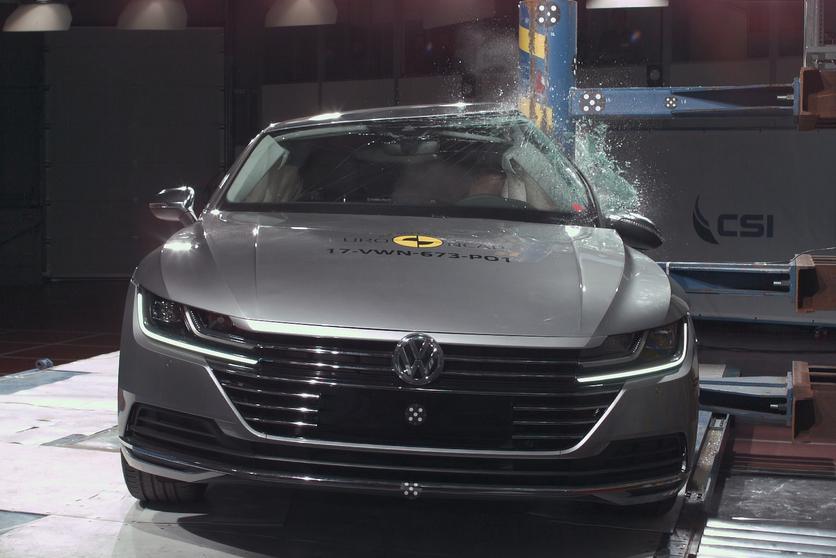
Applying to all variants, the rating is based on an adult occupant protection score of 96 per cent, child occupant score of 85 per cent, pedestrian protection rating of 85 per cent, and 74 per cent for safety assist.
Standard safety features include:
*Currently unavailable due to component shortages
Volkswagen covers its range by a five-year, unlimited-kilometre warranty.

There’s also 12 months of roadside assistance is included, and can be extended annually up to nine years provided you service your vehicle with an authorised Volkswagen dealer.
Scheduled maintenance is required every 12 months or 15,000km – whichever comes first. Volkswagen offers three- and five-year pre-paid Car Plans which bundle services together and save off paying as you go.
For the 140kW Arteon, the three-year plan costs $1600 and the five-year pack costs $2600, the latter including the first service for free. According to VW’s website, that saves you between $128-166 if you get the three-year Care Plan, or $778-$842 with the five-year one.
That’s not quite cheap when you think about it, and while cheaper than the likes of Audi it’s more expensive to maintain than the BMW 4 Series and Peugeot 508.
The ‘entry-level’ Arteon really lives up to its ‘Elegance’ name.
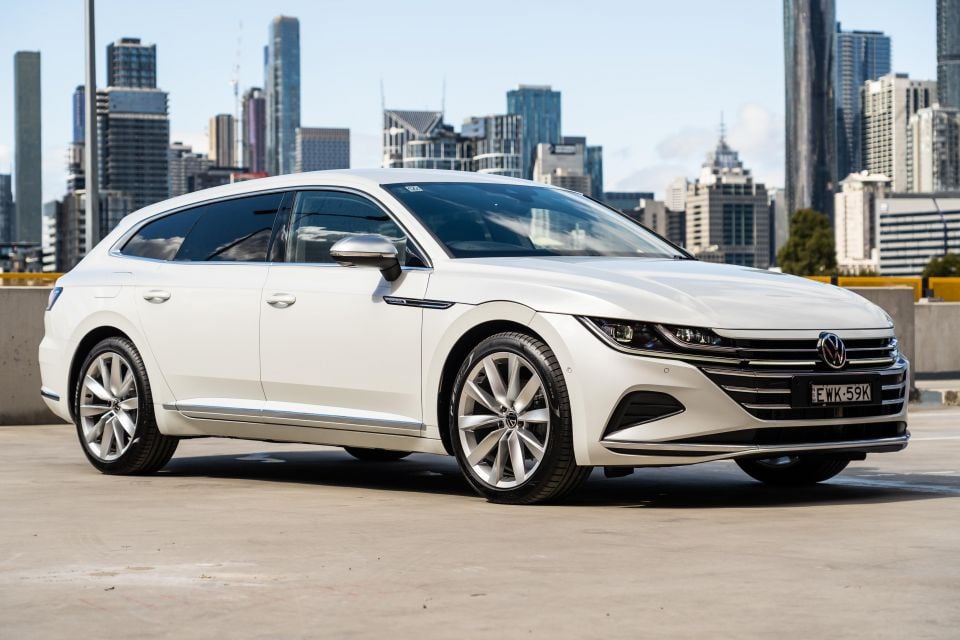
With sharp styling, premium kit, as well as a practical back seat and boot, the Arteon offers everything something like a 4 Series or Mercedes-Benz CLS does but for substantially less money.
For about $70,000 on the road, you have a large four-door coupe or shooting brake wagon with all the features and space you need, with a look that cuts a line in traffic without being too shouty like some rival designs.
It’s also super easy and comfortable to drive, and has a familiar feel thanks to its MQB roots meaning it feels like a more compact and wieldy car than it ought to be given its hefty 4866mm length and 2841mm wheelbase.
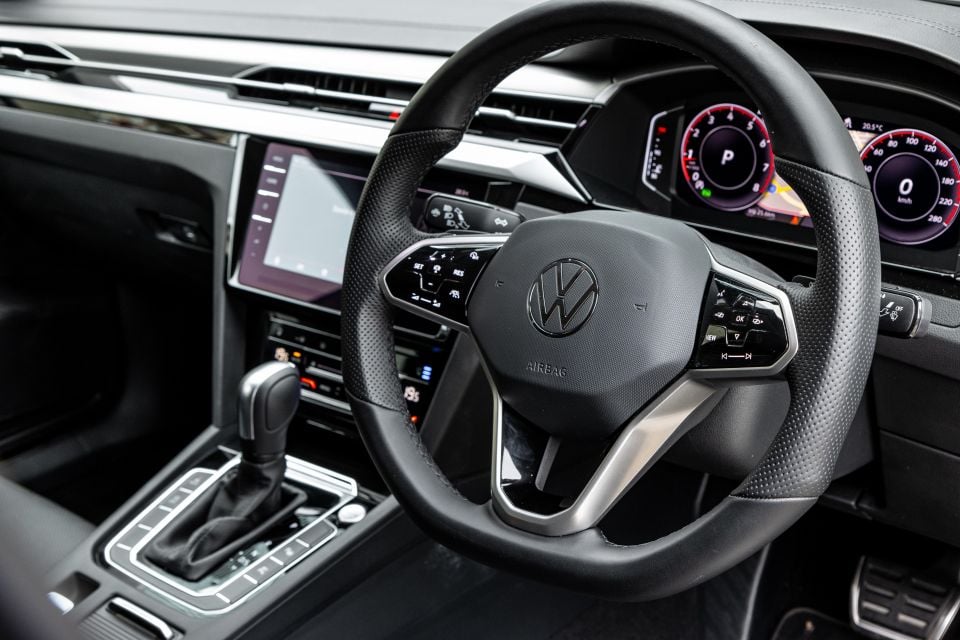
That’s not to say it doesn’t have its flaws. The fiddly steering wheel controls grate, the cabin is starting to date and isn’t hugely differentiated from a Passat, and it commands a substantial premium over the equivalent Passat.
You’ll also miss out on safety features like blind-spot monitoring and rear cross-traffic alert if you order an MY23 example, due to ongoing component shortages.
But all told, if you’re moving up in the world and want something nice that doesn’t shout, the Arteon gives you all the style and luxury of premium coupe-styled alternatives with some added practicality and change in your pocket.

Click the images for the full gallery
Where expert car reviews meet expert car buying – CarExpert gives you trusted advice, personalised service and real savings on your next new car.
James Wong is an automotive journalist and former PR consultant, recognised among Australia’s most prolific motoring writers.


Damion Smy
8 Hours Ago
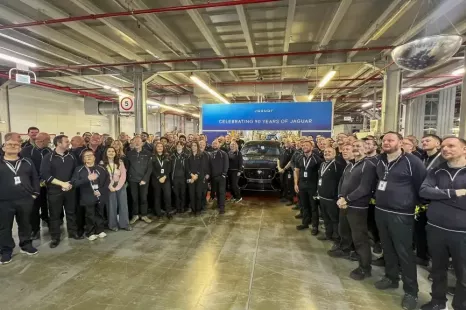

Damion Smy
11 Hours Ago
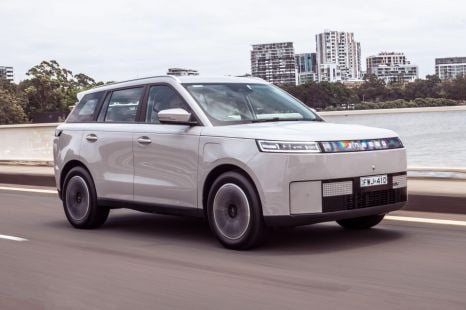

Josh Nevett
13 Hours Ago
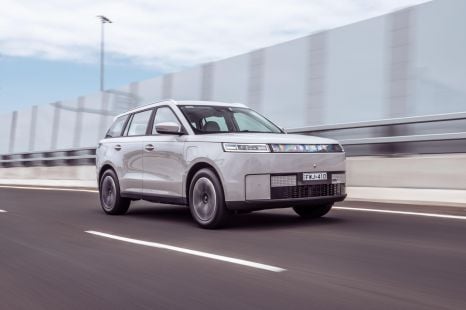

Josh Nevett
13 Hours Ago
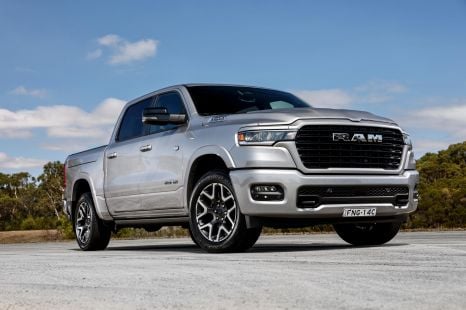

Damion Smy
14 Hours Ago
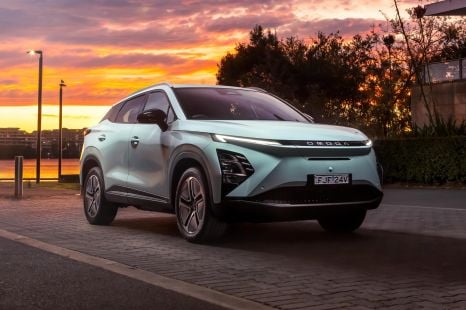

CarExpert.com.au
14 Hours Ago